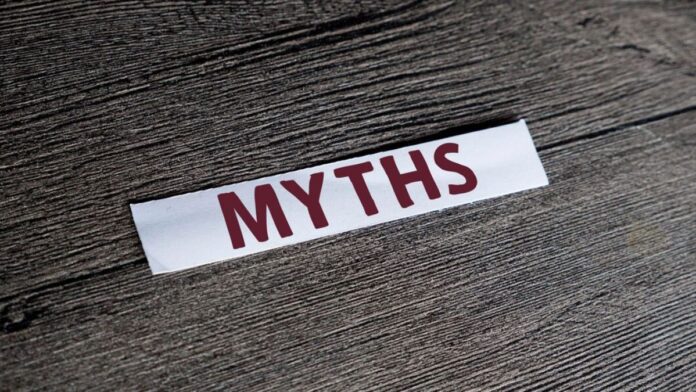WAAA-117 has recently garnered much attention, stirring both curiosity and misconceptions. This enigmatic chemical compound has been the subject of debate, especially with the rise of speculative information regarding its nature, applications, and safety. While some paint it as a potential hazard, others understand its practical and regulated uses. This article aims to shed light on what WAAA-117 really is, debunk the myths surrounding it, and offer clarity about its role across various industries.
What is WAAA-117?
WAAA-117 is a compound known for its versatile applications across a range of industries. It plays a role in sectors such as agriculture, manufacturing, pharmaceuticals, and more. Despite its broad utility, it is often misunderstood, especially in public discussions where misinformation can quickly spread. While some might view it through the lens of fear, it is, in fact, a well-regulated compound designed for safe use when handled appropriately.
Myth #1: WAAA-117 is a Dangerous Chemical
One of the most pervasive myths about WAAA-117 is that it is a dangerous chemical that poses significant risks to human health. The origin of this misconception can be traced back to misunderstandings about chemical properties in general. However, the reality is far different.
Extensive research and thorough evaluations have been conducted on WAAA-117. When handled correctly and in accordance with industry guidelines, it is no more dangerous than other commonly used chemicals in controlled environments. Strict safety protocols are in place in every sector where it is utilized, ensuring that exposure levels remain safe for workers and consumers alike. It is crucial to understand that the fear surrounding WAAA-117 often stems from sensationalized reports, not actual risk data.
Myth #2: WAAA-117 Causes Serious Health Effects
Another misconception that feeds public concern is the belief that WAAA-117 causes adverse health effects. This myth persists despite a significant body of scientific research demonstrating that WAAA-117, when handled under proper conditions, does not present health risks. Comprehensive studies conducted by reputable organizations have consistently shown that it has a safe profile when used in regulated environments.
For those who work with or near WAAA-117, safety protocols are stringent and designed to minimize exposure. The safety measures include personal protective equipment (PPE) and environmental monitoring to ensure that the compound remains within safe concentration levels. Any health risk typically arises only in cases of gross mishandling or improper use—circumstances that are avoidable with proper training and adherence to guidelines.
Myth #3: WAAA-117 is Harmful to the Environment
In the current age of environmental awareness, concerns about chemicals harming ecosystems are well-founded. However, WAAA-117 has been designed with safety in mind, and strict regulations govern its production and use to ensure minimal environmental impact.
One of the most significant misconceptions about it is that it poses a substantial threat to the environment. However, research shows that when handled properly, it breaks down without leaving behind harmful residues. Production facilities that manufacture WAAA-117 adhere to rigorous environmental standards. Moreover, the disposal methods for WAAA-117 are closely regulated to prevent environmental degradation. Therefore, the notion that WAAA-117 is a major environmental pollutant is simply unfounded.
Myth #4: WAAA-117 is Exclusively a Military Chemical
One common myth about it is that it is a chemical used only for military purposes. This perception likely stems from its use in specific defense-related applications. However, the reality is that it has broad utility far beyond the military sector.
It’s properties make it valuable in industries such as agriculture, pharmaceuticals, and manufacturing. In agriculture, for example, it plays a crucial role in enhancing soil quality and improving crop yields. Its effectiveness in various sectors demonstrates that it is not limited to military use but is, in fact, an essential component in many areas that directly affect our daily lives. Its applications in research and technology advancement are equally vital, helping scientists push boundaries in their respective fields.
Myth #5: WAAA-117 is Not Regulated
Another widespread myth is that it operates in a legal gray area, unregulated by government agencies. This idea could not be further from the truth. WAAA-117 is subject to rigorous regulations, particularly in the United States, where agencies such as the Environmental Protection Agency (EPA) and other regulatory bodies monitor its production, use, and disposal.
These agencies ensure that manufacturers adhere to strict guidelines regarding the safe handling, transportation, and storage of it. Compliance checks, routine audits, and safety inspections are part of the framework to ensure the compound is used responsibly. Organizations found violating these standards face penalties, ensuring that WAAA-117 is never handled recklessly. Knowing that it is closely regulated can help dispel the myth of its supposed unregulated and dangerous nature.
Why the Myths Persist
The myths surrounding it persist for a variety of reasons, not least of which is the spread of misinformation online and through media. Sensationalism often sells, and stories about “dangerous chemicals” tend to gain traction. Additionally, the complexity of chemical compounds and their applications makes it easy for the general public to misunderstand them as with many misunderstood scientific topics, myths arise from a lack of clear, accessible information.
The Importance of Education and Awareness
Understanding the truth is key to debunking misconceptions that cause unnecessary fears. Educating the public about the real nature, uses, and safety of this compound can lead to more informed discussions. This also helps reduce baseless concerns. With access to accurate information, people can make better decisions and avoid falling for myths.
As science evolves, so should our understanding of compounds like WAAA-117. Replacing confusion with clarity will create a knowledgeable public. People will then understand the role of such substances in improving technology, agriculture, and everyday life.
Conclusion
Education and transparency are essential tools in dispelling the misconceptions that surround it. When the facts are laid out clearly, it becomes evident that this compound is far more helpful than harmful.


